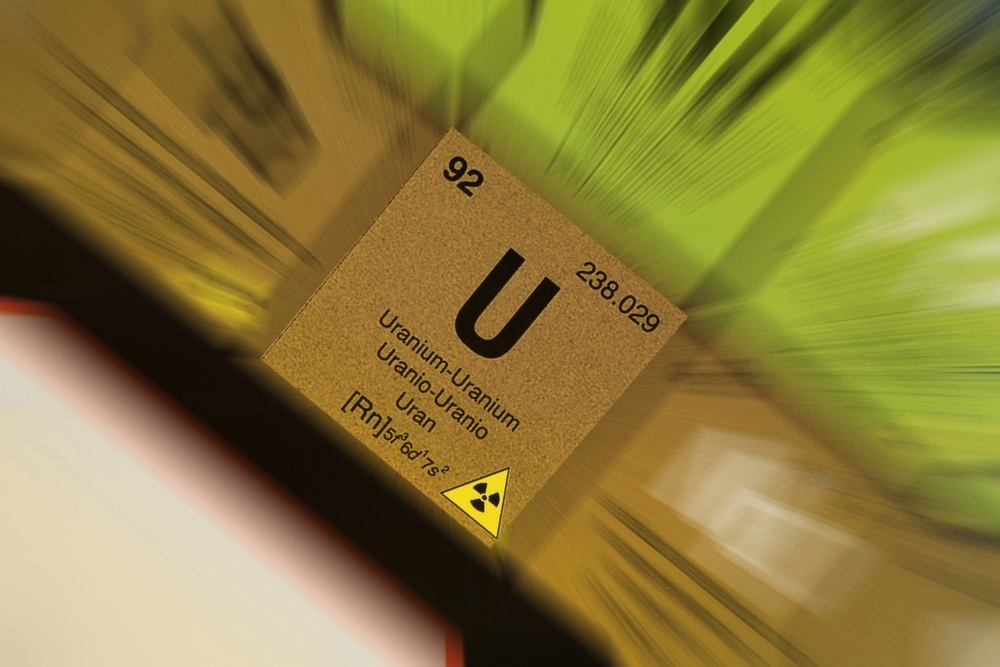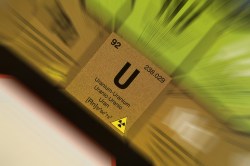What has 92 protons, deforms growing children, sickens adults, and is being squeezed out of its underground lair by frackers operating in Pennsylvania?
U[hh], uranium!
The toxic and radioactive heavy metal is naturally trapped in the Marcellus shale, the fossil-fuel-laden rock formation popular with frackers that stretches from upstate New York through Pennsylvania to West Virginia and Ohio. We know the uranium is in there, and we know fracking sets it free, because scientists have been saying as much for years.
Pennsylvania is finally launching a systematic study to measure uranium contamination caused by fracking. From Shale Reporter:
The Pennsylvania Department of Environmental Protection this month will begin testing for radioactivity in waste products from natural gas well drilling.
In addition to analyzing wastewater from hydraulic fracturing, known as fracking, the study also will analyze radioactivity in drill cuttings, drilling mud, drilling equipment, treatment solids and sediments at well pads, wastewater treatment and disposal facilities and landfill leachate, among others.
The study also will test radiation levels for the equipment involved in the transportation, storage and disposal of drilling wastes.
Pennsylvania has insisted that there is no problem. The state was reluctant even to test for uranium in fracking wastewater. Now the state has agreed to study the issue, but officials insist that the studies will not reveal anything of any concern to anybody. From a press release from the Pennsylvania Department of Environmental Protection:
Based on current data, regulations and industry practices, there is no indication that the public or workers in the oil and gas industry face health risks from exposure to radiation from [fracking waste and equipment].
Meanwhile, the realization that fracking dislodges uranium particles has lit up nuclear-powered lightbulbs over the metaphorical heads of some energy executives. From a February report in Forbes:
[Uranium Energy Corp. CEO Amir] Adnani insists that he can close [America’s] yellowcake gap through a technology that is similar to the hydraulic fracturing, or fracking, that has created the South Texas energy boom. Fracking for uranium isn’t vastly different from fracking for natural gas. UEC bores under ranchland into layers of highly porous rock that not only contain uranium ore but also hold precious groundwater. Then it injects oxygenated water down into the sand to dissolve out the uranium. The resulting solution is slurped out with pumps, then processed and dried at the company’s Hobson plant.
Fracking for uranium. Energy companies are already doing it accidentally as they frack for natural gas, so what could possibly go wrong once it’s done deliberately?
—–
CORRECTION: This post originally cited and misstated the results of 2011 USGS tests [PDF]. Those tests measured levels of radium, which is produced by the breakdown of uranium and thorium, not levels of uranium as originally stated.




